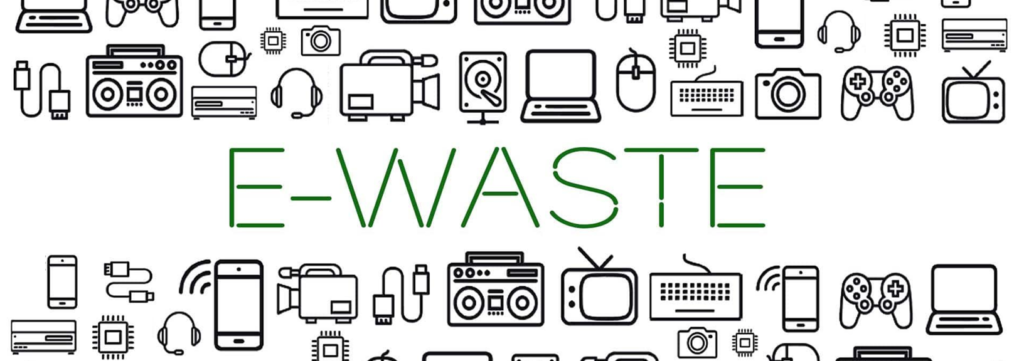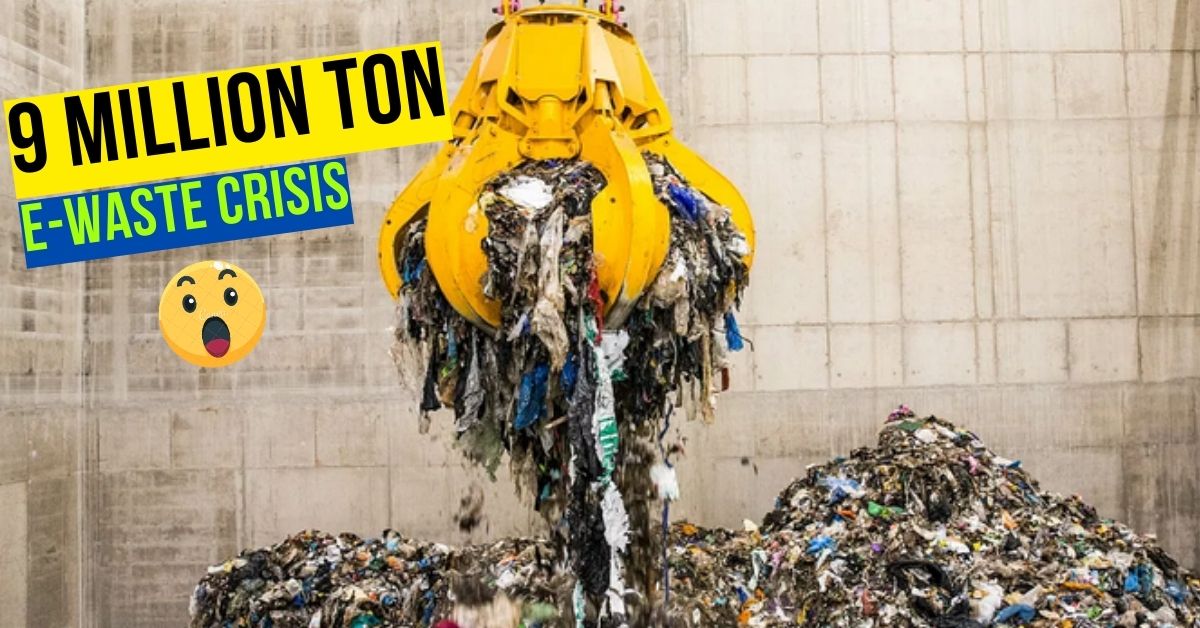Dive into the ‘E-Waste Crisis’ as we explore the escalating issue of electronic waste around the world, its environmental impact, and the steps we can take to address this looming threat.

The Rising Concern of E-Waste: An Overview
E-waste, a term that perhaps seemed niche just a decade ago, has become a phrase synonymous with the darker side of technological advancements. But what exactly does it mean?
Understanding E-Waste Crisis: Definition and Scale
E-waste stands for electronic waste, which refers to discarded electronic devices and components. With our insatiable appetite for newer and better technology, e-waste is piling up at an alarming rate. Imagine the weight of over 9 million elephants – that’s the magnitude we’re discussing!
The Role of Vapes, Chargers, and Small Electronics
While we often visualize e-waste as old computers and chunky televisions, smaller items like vapes and chargers contribute significantly. These may seem inconspicuous due to their size, but their cumulative weight is enormous.
Why It’s Labeled ‘Invisible’: A Hidden Crisis
The term “invisible” doesn’t suggest that these items vanish. Rather, because of their compact nature and the frequency with which they’re discarded, they often slip under the radar.
Environmental and Health Impacts of E-Waste
Think e-waste is just a landfill problem? Think again!
Land, Water, and Air Pollution
From leaking harmful chemicals into the soil to contaminating water sources, e-waste significantly impacts the environment. Did you know that burning e-waste releases toxic fumes into the atmosphere?
Hazards for Human Health
Chemicals like mercury and lead, commonly found in e-waste, pose severe threats to human health. From skin diseases to more grave neurological problems, the ramifications are wide-ranging.
The Lifecycle of a Vape and a Charger
Ever wondered what happens after you discard that old charger?
Production and Consumption
It begins with extracting raw materials and culminates in the device’s production. This lifecycle has environmental implications, from resource depletion to energy consumption.

Disposal and Decomposition
Once discarded, these devices either end up in landfills or get incinerated. Their breakdown releases harmful substances that impact our environment for years.
Addressing the Problem: Sustainable Solutions
Awareness is the first step to resolution!
Recycling Initiatives for E-Waste
Many organizations now focus on responsibly recycling e-waste. By extracting usable components, they reduce the need for new raw materials.
Reducing Consumption and Encouraging Reuse
The mantra “Reduce, Reuse, Recycle” has never been more relevant. Consider if you really need that new device or if the old one can be repurposed.
Tech Innovations for a Greener Future
From biodegradable tech products to gadgets designed for easy recycling, innovators are striving to create a more sustainable tech ecosystem.
Taking Action: How You Can Make a Difference
The power to change the future of e-waste lies in our hands!
Mindful Purchasing: Buy Less, Choose Wisely
Before splurging on the latest gadget, question its necessity. Could you do without it or opt for a more sustainable alternative?
Proper Disposal: Find Local Recycling Centers
Dispose of your e-waste responsibly. Look for local recycling centers that can help.
Advocacy: Spreading the Word about E-Waste
Talk to your friends, colleagues, and neighbors. The more people know the more impactful the change will be!

Conclusion:
The problem of e-waste is widespread yet manageable, especially when it comes to the invisible sort of chargers and vape pens. We can encourage sustainable solutions and make educated decisions to create a cleaner, greener future.
FAQs:
What is the estimated weight of global e-waste?
Approximately 9 million tons.
Why are vapes and chargers called ‘invisible’ e-waste?
Due to their small size and frequent disposal, they often go unnoticed.
How does the e-waste crisis impact human health?
Through chemicals like lead and mercury which can cause diseases.
What can individuals do to reduce e-waste?
Mindful purchasing, proper disposal, and advocacy are key.
Are there sustainable alternatives to traditional electronic gadgets?
Yes, from biodegradable products to devices designed for easy recycling.
Free e-waste Recycling event near me?
keep an eye on community bulletin boards, local newspapers, and social media groups, as they often announce such events. Remember, responsible e-waste disposal not only benefits the environment but also ensures that your data remains secure.
How To Reduce e-waste?
Buy Smartly, Maintain and Repair, Donate or Sell, Recycle Responsibly, Limit Impulse Buying, and Buy Refurbished.



